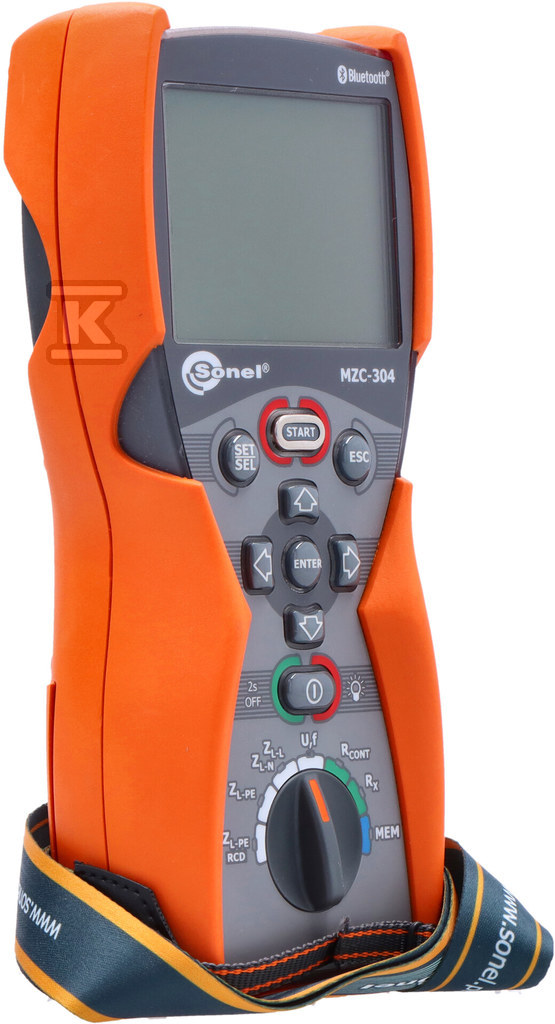Impedance is one of the most important concepts in electrical engineering. Impedance describes the resistance encountered by electric current flowing in AC circuits. It is therefore of great importance in the context of energy flow efficiency, which makes its precise calculation of great importance in many applications - from electrical system design to audio installations. In the following article, we will deal with this topic in detail, presenting what impedance is, when it is necessary to calculate it, and also what differences there are between it and individual elements such as coils and capacitors. Finally, we will explain how to correctly calculate reactive impedance in practice.

Check out impedance meters at the Onninen wholesaler
What is impedance?
Let's start with the very basics, explaining the concept of impedance. Mainly used in electrical engineering to describe the resistance encountered by electric current flowing in alternating current (AC) circuits. Impedance takes into account not only resistance, but also reactive elements - capacitance and inductance. In contrast, resistance refers only to direct current (DC).
 This provides a more complete description of the behavior of current in AC circuits, where important phenomena such as phase changes between voltage and current occur. Impedance is a complex number, consisting of a real part, resistance, but also an imaginary part, reactance, which results from the presence of capacitors and coils.
This provides a more complete description of the behavior of current in AC circuits, where important phenomena such as phase changes between voltage and current occur. Impedance is a complex number, consisting of a real part, resistance, but also an imaginary part, reactance, which results from the presence of capacitors and coils.
This has its consequences, because the capacitance of the capacitor causes capacitive resistance, and the coil inductive resistance. Therefore, the higher the frequency of the current, the greater the influence of these elements on the overall value of impedance. This is measured in ohms (Ω) and is of great importance in the analysis of alternating current, as well as in adapting devices to work in different electrical conditions.
When should you calculate impedance?
The impedance module value is worth calculating in some situations, especially related to the design and analysis of AC circuits. This is especially necessary in the case of systems that contain both resistors and reactive elements (the aforementioned capacitors and coils). In AC circuits, impedance has a direct impact on the flow of current, so its precise calculation is of great importance, as it allows for the proper adjustment of operating parameters, but also for the optimization of energy efficiency.
 Electrical equipment or modular equipment plays an extremely important role here. At the same time, you can't forget about other elements, such as surge arresters , overcurrent switches , etc. In DC circuits, it looks different, it is not so important here. This is because there are no phase or frequency changes that affect the behavior of capacitors and coils. In DC circuits, only resistance counts.
Electrical equipment or modular equipment plays an extremely important role here. At the same time, you can't forget about other elements, such as surge arresters , overcurrent switches , etc. In DC circuits, it looks different, it is not so important here. This is because there are no phase or frequency changes that affect the behavior of capacitors and coils. In DC circuits, only resistance counts.
Impedance calculations are especially important when determining how a circuit responds to varying current frequencies. This is important in audio systems, audio equipment, telecommunications equipment, and electrical and power installations. Remember, extremes are the worst, whether the impedance is too high or too low. High impedances can cause reduced device performance or energy loss, while low impedances can lead to excessive loading and overheating. Impedance calculations must also be performed with impedance matching, ensuring minimal signal reflections while maximizing power transfer in systems such as antennas and amplifiers.
Differences between impedance and reactive elements
Now let's consider the differences between impedance and reactive elements such as capacitors and inductors. They are closely related, but they differ in terms of definition, as well as their role in AC circuits. As we already know, the impedance module means the total resistance in an AC circuit. Both resistance and reactance are important here. Impedance de facto includes all components that affect the flow of current, i.e. resistors and reactive elements. It determines what is most important - current, voltage, power, magnitude and frequencies that appear here.
 Reactance, on the other hand, refers only to those circuit components that introduce resistance resulting from phenomena related to energy storage in electric fields (capacitors) and magnetic fields (coils). Reactance can therefore be divided into capacitive, where capacitors occur, and inductive (coils). Its value depends on the frequency of the current in the circuit.
Reactance, on the other hand, refers only to those circuit components that introduce resistance resulting from phenomena related to energy storage in electric fields (capacitors) and magnetic fields (coils). Reactance can therefore be divided into capacitive, where capacitors occur, and inductive (coils). Its value depends on the frequency of the current in the circuit.
To sum up, the most important difference is that impedance takes into account the total resistance in the circuit, while reactive elements only take into account the part of it related to the reaction to current variations.
Calculating reactive impedance
To understand how to calculate reactive impedance, we need to consider various elements, especially the effect of capacitors and inductors on resistance in AC circuits. Since reactive impedance is related only to reactance, it does not include resistance.
Inductive reactance (XL) is expressed by the formula: XL = 2πfL (f is the current frequency, and L is the inductance of the coil). Capacitive reactance (XC), on the other hand, can be calculated using the formula XC = 1/(2πfC), where C is the capacitance of the capacitor. If we have a circuit with inductive and capacitive reactance, their values should be added up vectorially. This is because they are opposite phenomena. This difference - between inductive and capacitive reactance - creates the resulting reactance. On this basis, we can calculate the total impedance of the circuit, using the Pythagorean theorem. We combine the resistance and reactance (X) in the complex form Z = √(R² + X²), obtaining a result that allows us to determine how the circuit reacts to alternating current.